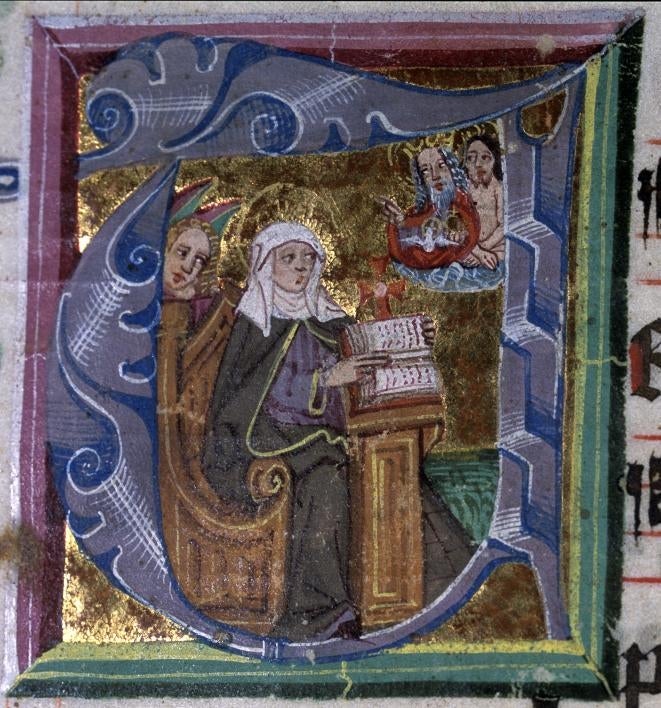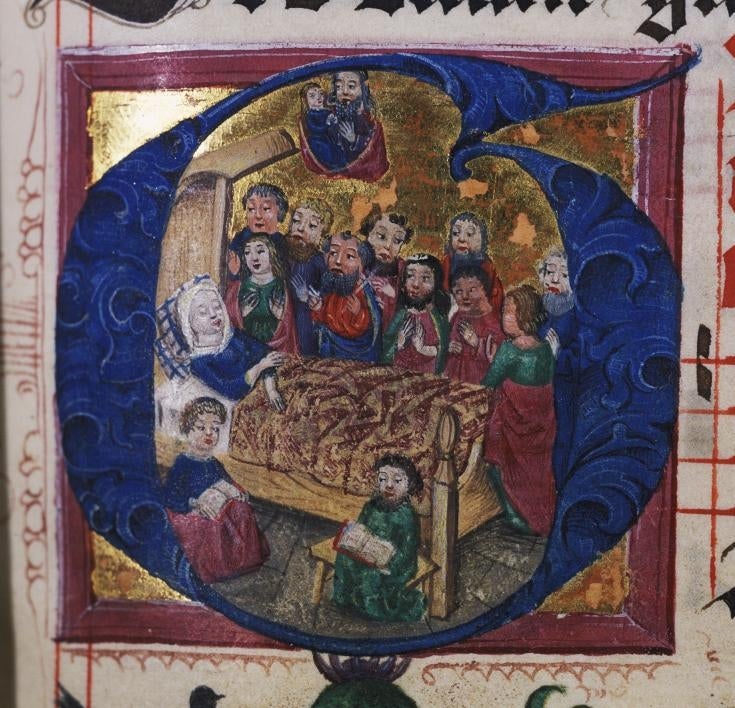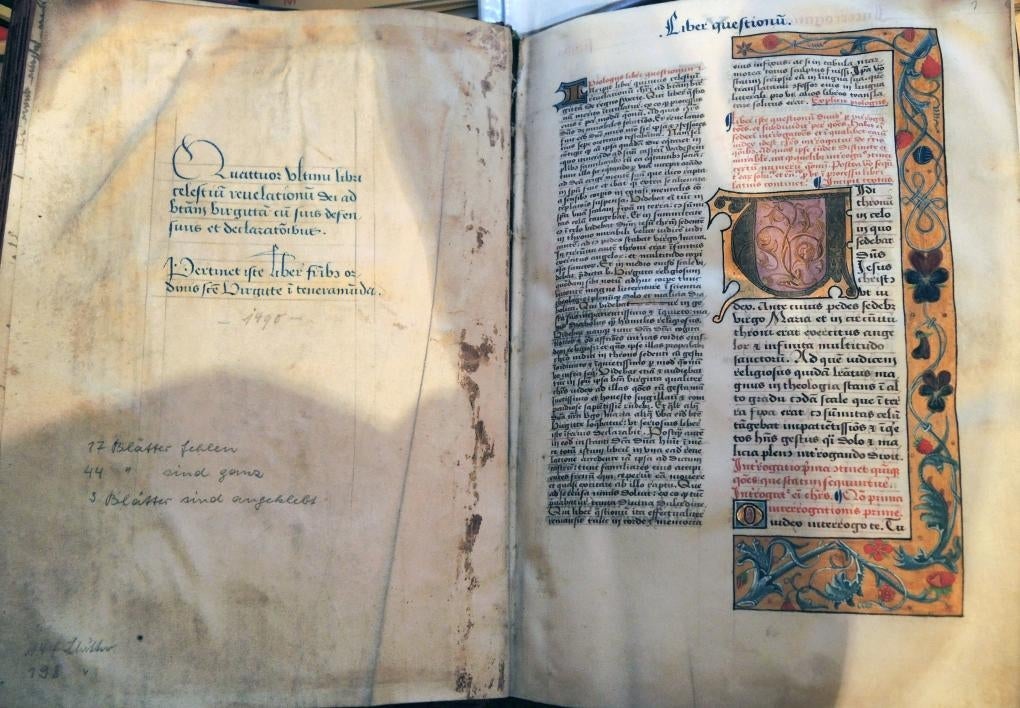An Arizona State University-led international research team is advocating for the protection of a newly uncovered trove of centuries-old Catholic texts that could greatly contribute to the world's collection of art and music from the Middle Ages.
The team discovered the previously unknown manuscripts, which date back to the 15th century, on the final stop of a tour of German monasteries late last year. The books include volumes adorned with gold leaf, and detail ancient rituals and devotional images that promise to expand what researchers can say about spiritual life for medieval women.
Professor Corine Schleif, who studies art history at ASU’s Herberger Institute for Design and the Arts, called the find at a monastery northwest of Munich “a sensational discovery.”
“I never expected in my lifetime to find this amount of unknown material,” she said.
Schleif and her colleagues immediately volunteered to catalog and digitize the collection, saying some of the books uniquely show how images and symbols were adopted by nuns of the Brigittine Order — the only group to compose liturgy for medieval women.
At the outset of conservation work in December, however, it was announced that the monastery was being permanently closed because few nuns remained there. The statement leaves the fate of the ancient library unclear and cuts off access for researchers.
“We hope,” Schleif said, “that by making the existence of this rare treasure known to the scholarly community and to the public at large, efforts will be made to continue the collection as an ensemble, to take any and all necessary measures to maintain and preserve the books and to ensure that the works are safe and accessible by placing them in an appropriate institutional library.”
Ideally, that would include digitizing the library’s most important books so they could be accessed anywhere — an undertaking Schleif and ASU visiting faculty Volker Schier, a musicologist working in the Institute for Humanities Research, completed with their earlier project “Opening the Geese Book,” a multisensory work for researchers, students and broader audiences to explore an illustrated, two-volume liturgical manuscript from 1510.
This time, they hope to build an immersive, virtual-reality platform called “Extraordinary Sensescapes” to provide insight into questions about the music, art, history, architecture and practices of the Brigittine nuns. Plans include a 3-D virtual model of a prototypical church and acoustic renditions of sounds in the space.
The team, also guided by Catholic University of Leuven (Belgium) postdoctoral researcher Karin Strinnholm Lagergren, uncovered the texts after being invited into the library at Birgittenkloster Altomünster, a vast 11th-century monastic complex for the Catholic order of Benedictine Sisters and later occupied by nuns from the Brigittine Order. The complex is the oldest continuously inhabited community of its kind, as many such monasteries were dissolved following the Protestant Reformation, destroyed in central Europe’s Thirty Years’ War or shuttered during the early 19th-century secularization of Germany.
The invitation came as a surprise, since the collection had been traditionally off-limits to visitors.
With the monastery shuttered, there is concern that the dozens of books could be sold to private dealers. However, representatives from the Bayerische Staatsbibliothek in Munich, the state library of Bavaria and one of the largest in the world, plan to investigate each object to determine if it can be claimed by Germany and brought to the library's special collections.
Top image: Shelves with manuscripts in the library of the Brigittine monastery at Altomünster, Germany. Courtesy of Eva Lindqvist Sandgren.
More Arts, humanities and education

ASU student finds connection to his family's history in dance archives
First-year graduate student Garrett Keeto was visiting the Cross-Cultural Dance Resources Collections at Arizona State University as part of a course project when he discovered something unexpected:…

ASU alumna makes her way back to the ASU Gammage stage for '¡azúcar!'
As the Los Angeles-based CONTRA-TIEMPO dance group prepares for its upcoming production “¡azúcar!” at ASU Gammage, for one member of the dance group it is also a nostalgic return to her home.Born in…

ASU FIDM professor wins international award for fantastical, sustainable creation
The horror of an ailing Earth inspired an Arizona State University fashion professor to create a fantastical garment out of sustainable, re-used and found materials that won a prestigious…





